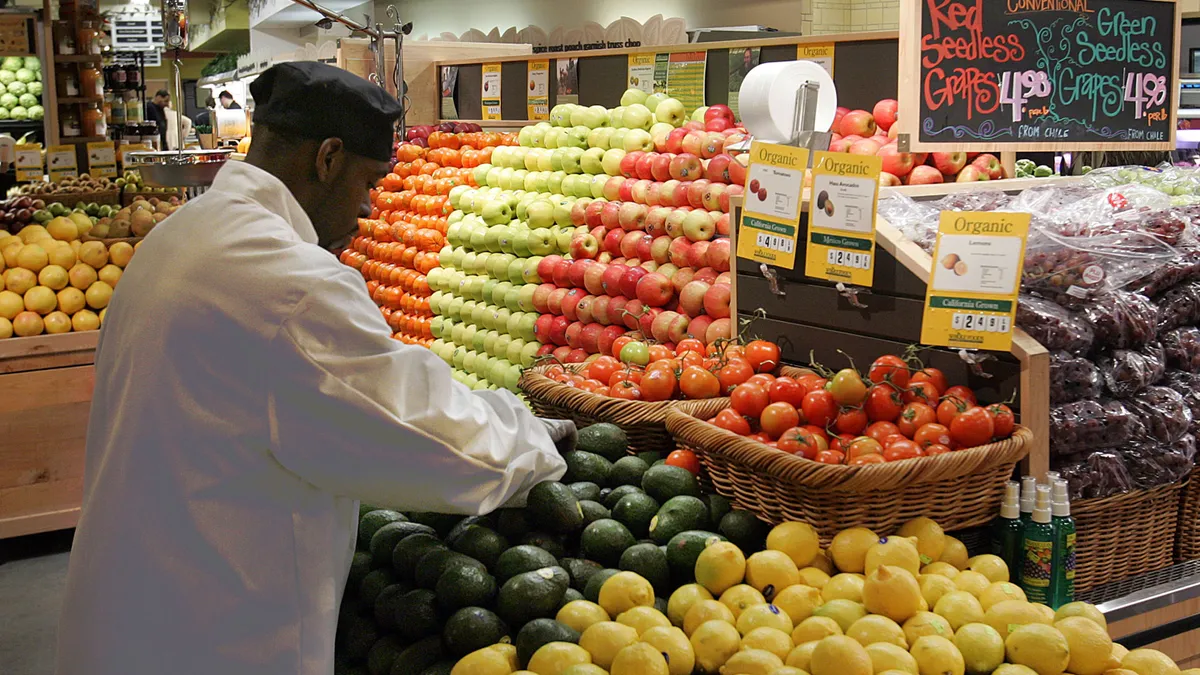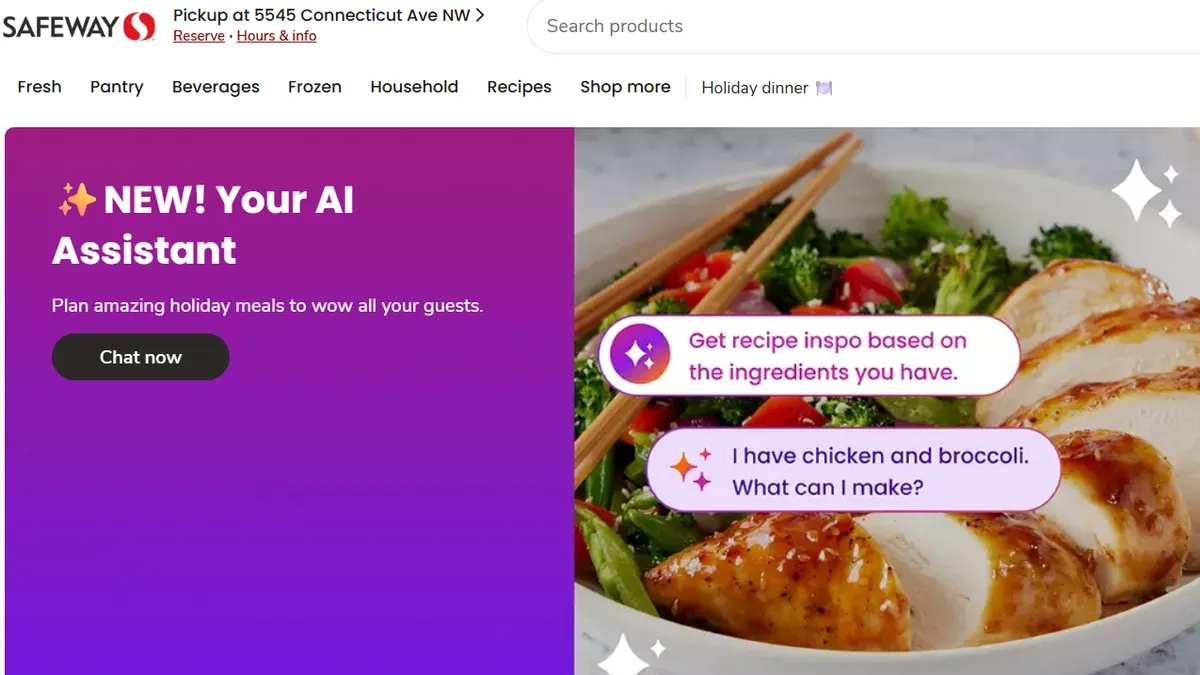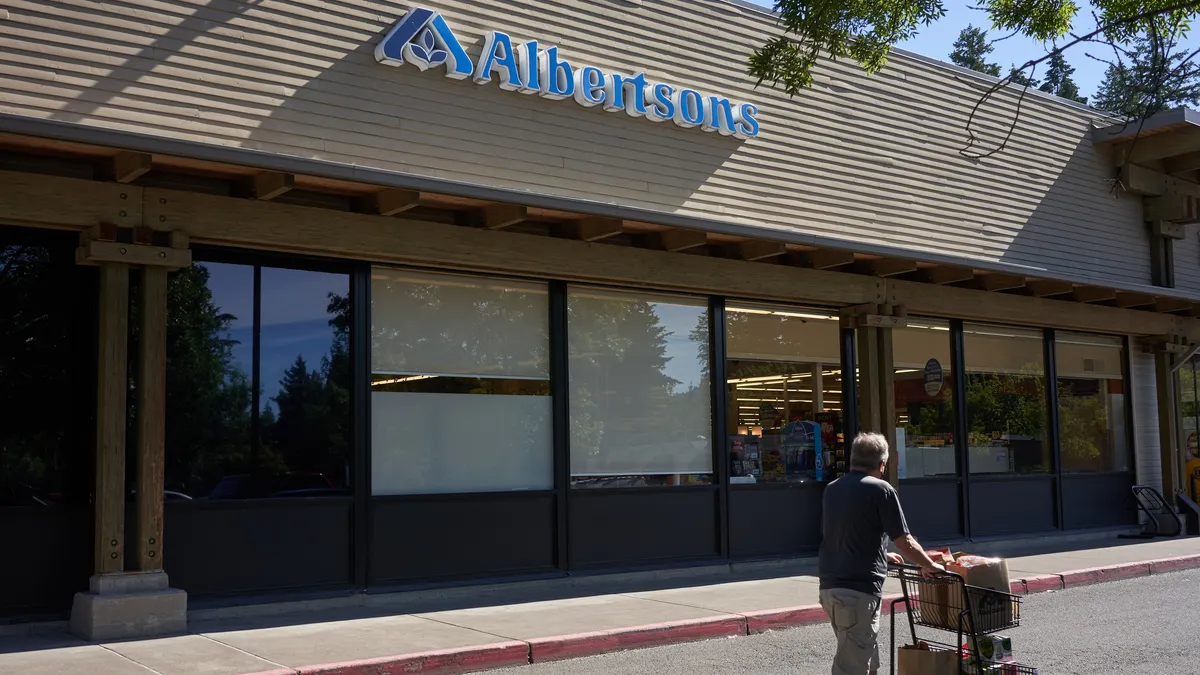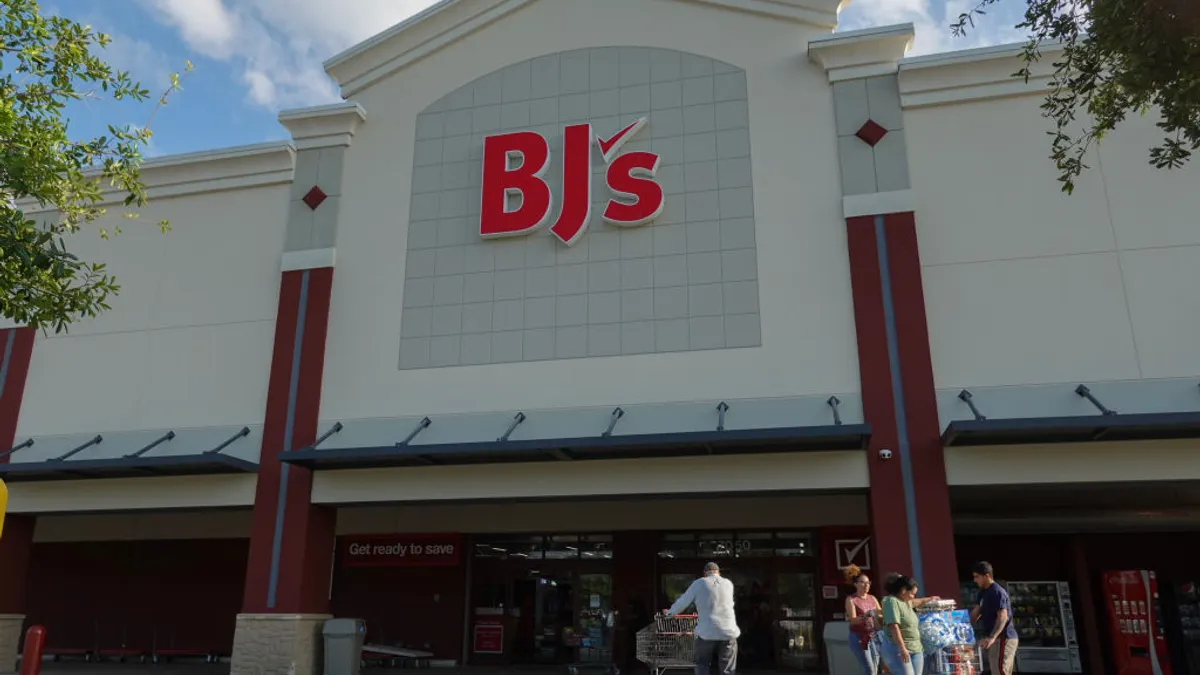Depending on the day and time, shoppers who tried to visit ShopRite’s website last week had a curious experience. Instead of seeing the usual links to digital coupons, store circulars and online shopping, they were piled into a virtual waiting room.
“Sorry for the wait,” shoppers were told on a separate page that listed their estimated wait time. “The demand for our online grocery shopping service has increased significantly.”
When Grocery Dive checked the site on the afternoon of April 8, the wait was over an hour. Access to the site was completely shut off, including information unrelated to e-commerce like store hours and locations. The experience, more than one customer pointed out on Twitter, was similar to what music and sports fans face when trying to secure in-demand tickets.
The comparison was apt. That’s because the company managing ShopRite’s online waitlist is the same one that manages waitlists for TicketMaster, the leading ticketing platform. Phil Hanson, North American CEO with Queue-It, said the waitlist function turns on when a high level of traffic floods to the site, then backs off when demand becomes more manageable. Rather than risk overloading the retailer’s systems, the technology routes shoppers onto a separate platform and provides a regularly updated wait time. Once a shoppers’ time comes, they have 10 minutes to confirm they’d like access to the site, or they’re booted to the back of the line.
Telling shoppers to wait in line isn’t something retailers like to do, but it’s becoming necessary as they cope with a sudden flood of e-commerce demand. In addition to ShopRite, Morrisons, Britain’s fourth-largest grocery chain, now uses Queue-It’s gatekeeping tool. So does Ocado, the e-grocer that temporarily shut its service down last month as shoppers rushed online. Over the past eight weeks, Hanson said Queue-It has signed up 25 grocery retailers globally, around half of which are in North America.
Other companies are holding off new customers as they serve core shoppers. Amazon on Monday announced it will place new grocery customers on a waiting list for service as it focuses on existing shoppers and works to expand its fulfillment capabilities. In the San Francisco Bay Area, online grocer Farmstead is similarly prioritizing existing shoppers, as well as elderly and immunocompromised shoppers while wait-listing new shoppers as it builds out capacity.
For consumers, who have turned to online shopping as a safer alternative and aren’t used to waiting for service, the experience is proving frustrating. ShopRite customers fumed about the virtual queue on social media, with many pointing out that they still faced long wait times for delivery after accessing the site.
I waited an hour to get on the @shoprite website. Finally on but no slots available for pickup or delivery thru 4/15. Not sure why I was allowed to go on.
— roxanne morr (@chichij166) April 7, 2020
In the U.K., shoppers were incredulous that tech whiz Ocado would put them in a virtual line. "The British love to queue, but online supermarket delivery firm Ocado has pushed this love to its limit," a Forbes story noted.
Hanson acknowledged the experience could be frustrating for grocery shoppers as well as grocers. But in addition to keeping a site from crashing, the queue function helps ensure shoppers have a smooth experience once they gain access. No product page breakdowns, no lost payment information.
Asked if the waitlist patch indicates a faulty site or substandard backend technology, Hanson said even the most technologically advanced websites can buckle under a glut of traffic. “You double or quadruple traffic in a matter of two weeks and your system is going to be overloaded,” he told Grocery Dive.”
ShopRite did not return Grocery Dive’s requests for comment or an interview.
Bill Bishop, chief architect with Brick Meets Click, said that companies are aware of the long-term impacts of order delays and a poor online experience, particularly to high-value existing shoppers. They want their service to run smoothly, even if it means they have to delay service for some shoppers.
“The customer experience is now as important, if not more important, online than in-store,” he told Grocery Dive.
But the trade-off could be alienating droves of new shoppers who might otherwise become loyal to a retailer. According to a recent Brick Meets Click survey, 26% of shoppers who bought groceries online in March were doing so for the first time.
Depending on the market, wait times for grocery delivery and pickup can stretch a week or longer. Last week, Instacart introduced a function that allows shoppers to book delivery times as far out as two weeks.
Consumers are turning to a variety of tricks, from obsessively checking for delivery slots to pre-loading their carts and racing for a spot right when new ones open up. Meanwhile, grocers are quickly adding servers and warehouse capacity and hiring as many workers as they can to fill and deliver orders. Amazon says it's adding online grocery capacity every week. It's also further limiting hours at select Whole Foods stores so that employees can have more time to fill online orders. Over the past few weeks, the number of Whole Foods offering pickup service has grown from 80 to 150, CNBC reported.
Pradeep Elankumaran, Farmstead's CEO, said he’s doubled his workforce over the past two weeks and is rapidly adding warehouse space. He said the company has “many, many thousands” of new customers on its waitlist for service. It’s focused first on serving vulnerable shoppers, including elderly and immunocompromised individuals, then its existing members, including those who have signed up for Farmstead’s weekly delivery service. The company is steadily adding new customers, said Elankumaran, and hopes to soon be able to deliver to meet most, if not all, new customer demand soon.
“Every day we’re servicing some number of new customers that have showed up in the last few weeks,” Elankumaran told Grocery Dive. “The goal is to very aggressively increase the number of new customers we can let in over the next few weeks.”


















